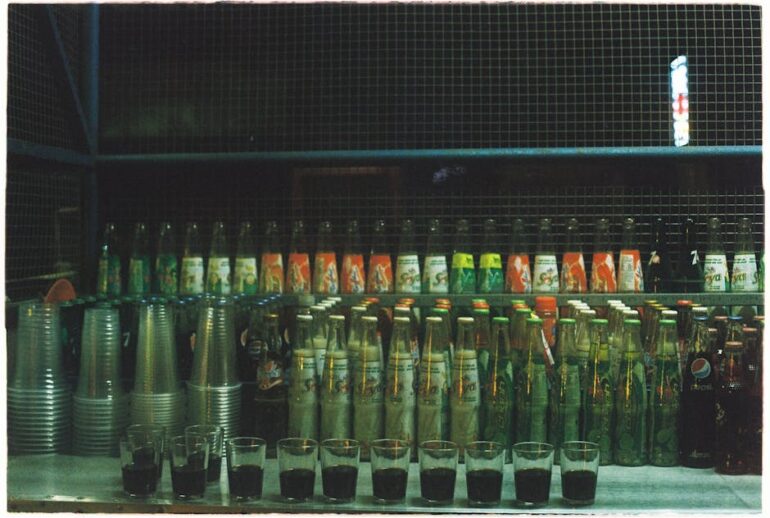You know, sometimes I sit here, kinda just thinking about how much marketing has changed. Not like, big, fancy global campaigns, but more the local stuff. Remember when you’d just put up a billboard or run an ad in the local paper? That still happens, sure, but in 2025, it feels almost quaint, doesn’t it? What’s really shaking things up, for a while now actually, but keeps getting smarter, is this whole idea of geofencing display ads.
It’s not some super secret magic trick, though it sure feels like it sometimes. Basically, imagine drawing an invisible fence, right around a specific spot – could be a competitor’s store, a convention center, even a park where a bunch of your potential customers hang out. And when someone with their phone steps inside that fence? Bam! They start seeing your ads, popping up on their favorite apps or websites. It’s like whispering in their ear, “Hey, we’re right around the corner, come check us out,” but in a totally digital way.
I remember first hearing about this a few years back, and honestly, it sounded a bit sci-fi. But it’s totally real, and it’s gotten way more precise. We’re not just talking about a whole city anymore, we can get down to like, a couple of blocks, or even inside a specific building. That’s pretty wild when you think about it. For a small business, or even a bigger chain with many locations, this is a seriously powerful tool. You don’t just throw money at a wide net, hoping to catch a few fish. You cast your line where the fish are, or where they’re likely to be biting.
Why Geofencing Display Ads Are So Cool Right Now
Look, regular online ads are fine. You target interests, demographics, all that jazz. But geofencing? It adds this whole other layer of context. Someone’s physically near your business, or near a place where people who need what you offer hang out. That’s a huge difference. Think about it: if I own a coffee shop, do I want to show my ad to someone across town who loves coffee, or to someone who just walked out of Starbucks two blocks away? It’s a no-brainer. The person nearby is way more likely to actually walk through my door.
It’s about relevance, right? People are so swamped with ads these days. Most of them just kinda wash over you. But an ad that shows up when you’re literally in the vicinity of something relevant? That sticks a bit more. Like, I was at this big tech conference last spring, and suddenly, I started seeing ads for a new gadget store that had just opened a block away from the convention center. I wasn’t even looking for anything, but because the ad popped up when I was there, it got my attention. Ended up checking the place out after the conference wrapped up. That’s the kind of direct impact we’re talking about.
Getting Super Specific with Your Ad Targeting
The real beauty here, especially in 2025, is how precise you can get. It’s not just about drawing a circle on a map anymore. Some of the platforms let you map out weird, irregular shapes, trace specific building outlines, or even target multiple, tiny little areas.
And here’s a cool bit: you can even use it for competitor conquest. I mean, not in a mean way, but in a smart way. If you sell running shoes, why wouldn’t you set up a geofence around your biggest competitor’s store? Anyone who visits them could then see an ad for your place, maybe with a special offer. “Hey, did you just check out those new XYZ shoes? We’ve got ’em cheaper, and a free sock fitting!” It’s a bit cheeky, perhaps, but totally fair game in the marketing world.
What’s also neat is how you can tailor the message. If your geofence is around a particular type of business, say, a gym, your ad might be for protein shakes or workout gear. If it’s around a concert venue, maybe it’s for pre-show dinner specials at your restaurant. The context of the location helps you craft a message that actually resonates with someone who’s there.
What Kinda Businesses Should Think About This?
Honestly, almost any business with a physical location can get a kick out of geofencing. Retail stores, restaurants, car dealerships, real estate agents (imagine targeting new housing developments!), doctors’ offices, salons, even event organizers. If someone needs to physically come to you, or if their current physical location gives you a clue about what they might want, then geofencing is worth a serious look.
Think about a new restaurant opening up. They could geofence the surrounding few blocks, and anyone living or working there gets a special “Grand Opening” offer. Or a car dealership running a weekend sale – they could geofence not just their own lot, but also busy shopping centers nearby. The possibilities are pretty wide open.
Beyond Just Location: Understanding Foot Traffic
What’s interesting is it’s not just about where people are right now. With some systems, you can also look at where people have been. So, if someone frequently visits a certain type of store, you can target them even when they’re not in the geofenced area. This is sometimes called “georetargeting” or “historical geofencing.” It builds a profile based on physical behavior, which, when you think about it, is a pretty strong indicator of interest.
Let’s say you sell high-end camping gear. You could identify people who frequently visit national parks or specific outdoor recreation areas. Then, when they’re back home, chilling on their couch, your ad pops up, reminding them of that awesome new tent they might want for their next trip. It’s a clever way to extend the reach beyond the immediate physical fence.
It’s definitely getting more sophisticated. We’re not just throwing ads at a wall and hoping. We’re getting smarter about who we show ads to and when it makes the most sense. And in 2025, with more and more people practically glued to their phones, that immediacy and relevance are super powerful.
But, you know, it’s not all sunshine and rainbows. You gotta be smart about it.
Some Stuff to Think About (It’s Not a Magic Wand)
One thing, and this is important, is not to get creepy. Nobody wants to feel like they’re being spied on. The ads need to feel helpful and relevant, not like Big Brother is watching. So, think about the message. Make it valuable. Offer a discount, a unique item, some useful info. Don’t just pop up an ad for the sake of it.
Also, it takes a bit of planning. You can’t just draw a fence and expect miracles. What’s the goal? Are you trying to drive people to your store? Get them to download an app? Just build brand awareness? The goal shapes the whole campaign. And testing is a big deal. You might run a campaign for a week, see how it does, then tweak the geofence, the ad copy, the offer, and run it again. It’s a process of refinement, for sure.
And yeah, the data side of it. You want to pick a platform that gives you good reports. How many people saw your ad inside the fence? How many clicked? Did any of them actually visit your store afterward? (Some platforms can even track this, which is pretty wild and super useful). Without good data, you’re just guessing.
My experience tells me that smaller, more focused geofences often perform better than huge, sprawling ones. It’s about targeting those specific pockets of opportunity. And don’t forget the actual ad creatives. A great geofence with a boring ad won’t do much. You still need compelling images, clear messages, and a strong call to action. Like, “Get 15% off when you show this ad!” or “New spring menu just dropped!”
Quick FAQs About Geofencing Display Ads
What’s the actual difference between geofencing and geotargeting?
Basically, geofencing is super specific. You draw a virtual fence around a precise area, and ads trigger when someone enters or leaves it. Geotargeting is broader; it targets people based on their general location, like a whole city or a zip code. Geofencing is like a sniper rifle, geotargeting is more like a shotgun.
How accurate are geofences? Can they tell if I’m on the second floor of a building?
The accuracy has gotten way better, often down to a few meters. But no, they usually can’t tell if you’re on the second floor versus the first. They work based on GPS and Wi-Fi signals primarily, so it’s more about the ground-level footprint of the area. It’s close enough for most marketing purposes, though.
Do people have to have my app for this to work?
Nope, not usually. Most geofencing display ads work through ad networks that partner with thousands of apps people already use every day. So, as long as someone is using an ad-supported app on their phone with location services enabled, your ad can show up.
Is geofencing expensive for a small business?
It can be surprisingly affordable, especially compared to some traditional advertising. The cost depends on how many people you want to reach, how big your geofences are, and how long your campaign runs. Many platforms offer flexible budgets, so you can start small and scale up. It’s not just for the big guys anymore.
How long should someone be inside a geofence before they see an ad?
It varies by platform and how you set it up. Some systems can show ads almost immediately upon entry, while others might wait a few minutes or require a minimum dwell time (how long someone stays in the area) to make sure they’re not just passing through quickly. The idea is to hit them when they’re actually “there” and not just driving by.
So, yeah, that’s pretty much the scoop on geofencing display ads for 2025. It’s not a shiny new thing in the way it was five years ago, but it’s matured, become more sophisticated, and frankly, more essential for any business that relies on local customers. If you’re not thinking about where your potential customers physically are, and how to reach them right there, you might be missing out on a huge slice of the pie. It’s all about making your message land exactly where it matters most.

















